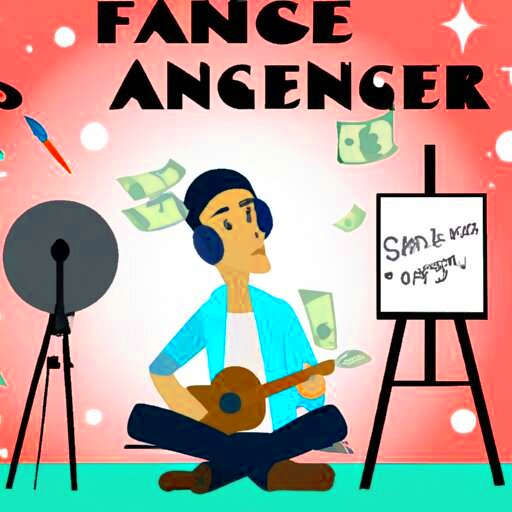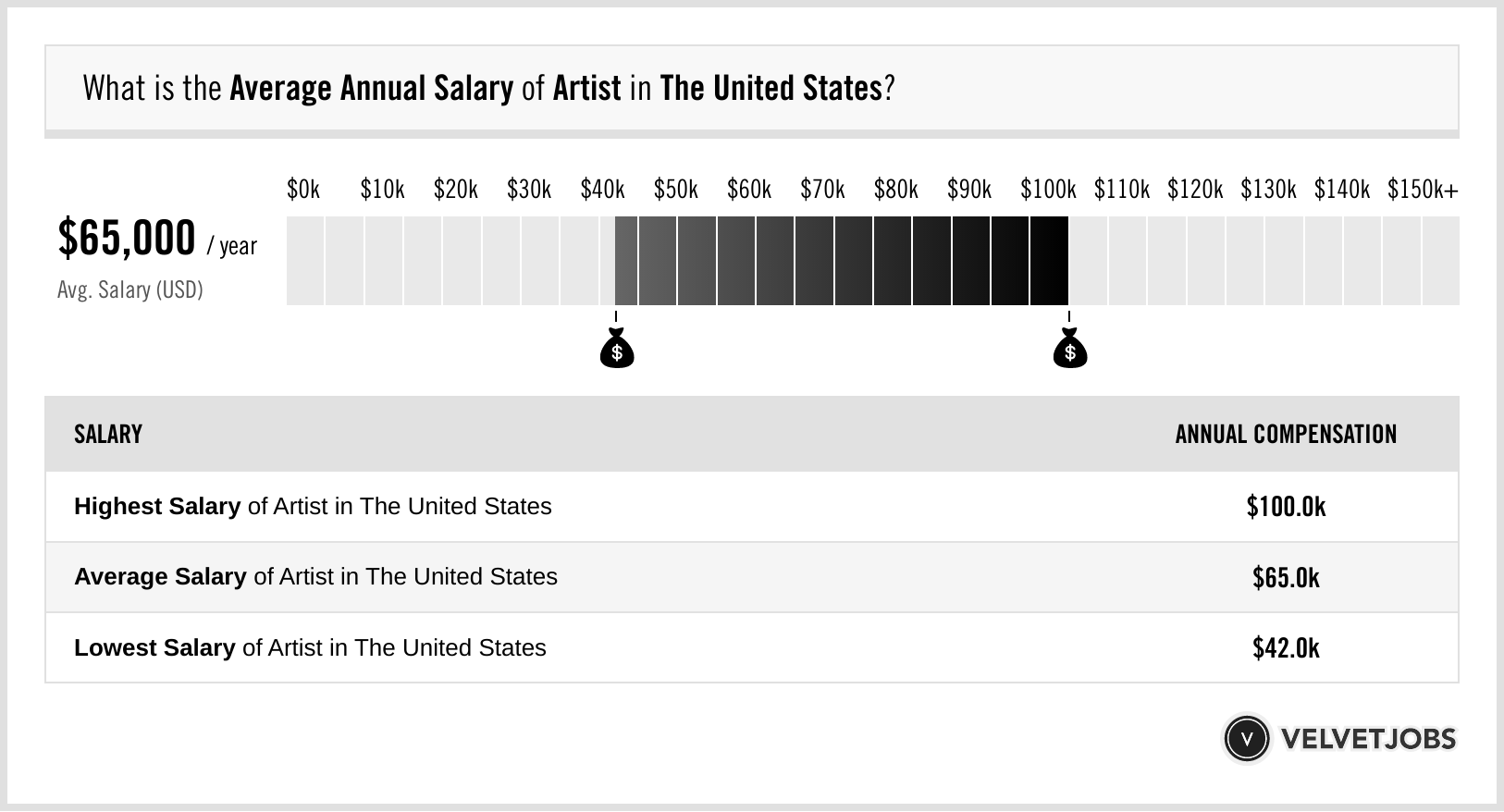The reality is that your income is influenced by factors like your reputation the nature of your projects and your time management skills. And let’s not overlook the role of chance; occasionally landing a client can completely transform your situation. However dont let this discourage you. Numerous artists find freelance opportunities rewarding as they offer creative autonomy and flexibility in managing their schedules, which is invaluable.
Factors That Affect Earnings as a Freelance Artist

The money you earn as a freelance artist is influenced by various factors, not just your level of talent. I’ve come across artists with exceptional skills who find it challenging to maintain a steady income. Here are a few points to consider:
- Experience: The more years you’ve spent perfecting your craft, the more you can charge. However, experience alone isn’t enough; your portfolio should reflect this growth.
- Client Base: Artists with a steady group of clients tend to have more stable earnings. Building long-term relationships with clients takes time, but it's worth it.
- Specialization: Niches like illustration for books or digital portrait commissions often pay better than general art services. Find a niche that excites you and focus on it.
- Location: Interestingly, where you live can also affect how much clients are willing to pay. Artists in
Also Read This: Does Fiverr Protect Buyers? Understanding Buyer Protections on Fiverr
How to Set the Right Pricing for Your Art
Determining the price for your artwork can be quite challenging as a freelance artist. I recall when I was starting out I was unsure about what to charge. I worried that if I set the price too high I wouldn't attract any clients. On the other hand if I priced it too low I feared that people would perceive my work as being of little value. It's a tricky equilibrium to strike but with some experience and self assurance it can be navigated successfully.
The trick is to not underestimate the worth of what you do. Keep in mind that you're not simply billing for the hours spent creating the artwork but also for the extensive practice, imaginative thinking and hard work that have gone into honing your abilities. Here's a suggested approach for you to consider.
- Hourly Rate vs. Project-Based Pricing: Some artists prefer to charge by the hour, while others set a price per project. Both methods have their pros and cons. An hourly rate ensures you’re paid for all your time, but a project price can appeal to clients who prefer fixed costs.
- Consider Material Costs: If you’re creating physical art, don’t forget to include the cost of materials, shipping, and packaging when setting your prices.
- Check the Market: Look at what other artists with similar skills and experience are charging. This can give you a benchmark, but don’t feel like you need to match their prices exactly. Your style and niche might allow you to charge more.
- Know Your Audience: The kind of clients you’re targeting will also affect your pricing. A business looking for logo design will probably have a higher budget than someone commissioning a personal piece.
In the end, your prices should be a true reflection of the worth of your artwork and your financial aspirations. And don't forget, it's perfectly fine to tweak your rates as you grow in your craft and receive more recognition.
Also Read This: What is the Best Way to Withdraw Money from Fiverr?
Tips for Increasing Your Income as a Freelance Artist
Every independent creator aspires to increase their income but achieving that goal takes time. Through my personal experience I’ve discovered that its usually the gradual and steady progress that leads to significant changes. The encouraging part is that by implementing strategies you can enhance your earnings without feeling swamped.
Here are some proven strategies to support your growth journey.
- Offer Different Services: Sometimes, expanding your offerings can attract more clients. For example, if you’re a painter, try offering prints of your work, or digital versions that can be used in marketing.
- Build a Personal Brand: Clients are more likely to pay a premium for an artist they trust. Building a personal brand—through social media, a website, or even attending art fairs—can help you establish credibility and attract higher-paying clients.
- Up-Sell to Existing Clients: One of the easiest ways to increase your income is by offering more to clients you’ve already worked with. Maybe they hired you for one illustration, but you could also offer a full series or even suggest adding animation to it.
- Increase Your Prices Over Time: As you gain more experience and confidence, don’t be afraid to raise your prices. Clients understand that as your skills grow, so does the value of your work.
- Collaborate with Other Artists or Businesses: Collaborations can introduce you to new audiences and provide opportunities for larger projects. I once collaborated with a local boutique, and it not only brought in income but also opened doors to future projects.
Boosting your income isn’t just about putting in hours; it’s about being strategic with your efforts. By offering a range of services and prioritizing strong connections with clients you can gradually increase your income.
Also Read This: A Guide to Becoming a Freelance Art Director
The Role of Experience and Skill in Determining Earnings
Throughout the years I've observed that the level of experience significantly impacts an artists earning potential. When I was starting my journey I lacked confidence in setting my prices and often found myself questioning my worth. However with time and increased expertise I not only honed my skills but also grew more at determining the value of my work.
Here’s how your level of experience and expertise can impact your income.
- Better Portfolio: With more experience, your portfolio naturally grows and improves. Clients are more likely to pay higher rates when they can see a body of work that demonstrates your talent and reliability.
- Efficiency: As your skills improve, you’ll find that you can complete projects faster and with better results. This means you can take on more work in less time, ultimately increasing your income without burning out.
- More Confidence in Negotiation: With experience, you also become more comfortable discussing pricing with clients. You’ll know how to handle situations where clients ask for discounts or more work for the same rate, and you’ll feel confident sticking to your worth.
- Word of Mouth: One of the biggest benefits of experience is that your past clients will start referring you to others. This can bring in a steady stream of work without you having to spend as much time marketing yourself.
You can't hurry along the process of gaining experience but it holds tremendous worth. As you develop as an artist your income will increasingly mirror that growth. It's not solely about the duration of your work but also the richness and substance of your creations that will distinguish you and contribute to your earning potential.
Also Read This: How to Make Money on Fiverr in Pakistan
FAQ: Common Questions About Freelance Artist Earnings
As a freelance artist, you’ll frequently be asked about your potential earnings and the ways to sustain yourself through your art. I’ve been posed with these inquiries numerous times and I still recall how overwhelming they felt when I was just starting my journey. Below are some of the questions I often come across along with my own perspectives on them.
- How much can a freelance artist realistically earn?It varies greatly. Some artists make a modest income, while others can earn a substantial amount. It largely depends on factors such as your niche, client base, and how effectively you market yourself. My own earnings have ranged from modest to very rewarding, depending on the time of year and the projects I took on.
- How do I find high-paying clients?Finding high-paying clients involves a mix of networking and showcasing your best work. Attend art shows, engage on social media, and consider collaborating with other creatives. It’s about getting your work out there and building a reputation. In my experience, word-of-mouth recommendations have been incredibly effective.
- What should I charge for my art?There’s no one-size-fits-all answer. Start by calculating your time and material costs, and then consider the market rate for similar work. As you gain experience and build a reputation, you can adjust your rates accordingly. I’ve found that periodically reviewing and adjusting your pricing helps keep up with your growing skills and experience.
- How do I deal with inconsistent income?Inconsistent income is common in freelance work. To manage it, create a budget that accounts for fluctuating earnings and set aside savings during the months when you earn more. It’s also helpful to diversify your income streams, such as by offering various services or products. This way, you’re less dependent on a single source of income.
- How can I increase my income as a freelance artist?Consider diversifying your services, investing in marketing, and building a strong online presence. Engaging with your audience on platforms like Instagram or Etsy can attract new clients. Over time, as your skills and reputation grow, you’ll be able to command higher rates and secure better projects.
Conclusion: What to Expect as a Freelance Artist in Terms of Income
Working as an artist can be fulfilling but also tough. Be prepared for varying income, particularly when starting out. However with determination and a thoughtful approach you can achieve more consistent and fulfilling earnings. Embrace the process continue improving your craft and confidently assert the worth of your creations. In due time your commitment will be evident in your financial success.




